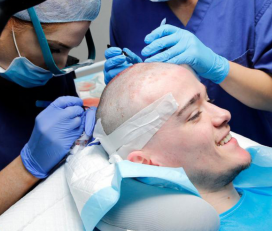

22 Top-Rated Tourist Attractions in Istanbul & Things to Do
Istanbul, which has been coveted by many empires over the centuries, is one of the great metropolises in the world. It straddles both Europe and Asia.
Discover the tourist attractions of Istanbul:
The colony of Byzantium was founded around 1000 BC. It grew to become Constantinople, the capital of the Byzantine Empire. After the Ottoman conquest, it remained their heartland.
Officially renamed Istanbul following the founding of the Turkish Republic, the city is scattered with beautiful remnants of its long and distinguished history. The tourist attractions will amaze even the most monument-weary.
You should also make sure to visit the four major sights (the Hagia Sophia Mosque. Topkapi Palace. Blue Mosque. Grand Bazaar).
While many of the best and most visited places are in or near Sultanahmet’s old city district, there is plenty more to see and do beyond that area.
Check out our top Istanbul attractions and things to do when planning your trip.
Notice: Businesses may temporarily close due to safety and health concerns.
1. Admire Hagia Sophia (Aya Sofya) Mosque

According to legend, Justinian, the Byzantine Emperor of Byzantine entered his completed church in CE 536 and cried out “Glory To God That I Have Been Judged Worthy of Such a Work!” Solomon, I have outdone YOU!
The Hagia Sophia (Aya Sofya, in Turkish) was the emperor’s bold statement to the world about the wealth and technical abilities of his empire.
Tradition held that the official center of the universe was the area around the emperor’s seat within the church.
The Hagia Sophia is a beloved landmark in Istanbul. It was converted to a mosque after Constantinople was conquered by the Ottoman armies. In the 20th century, it became a museum and then reverted to a functioning mosque in 2020.
Address: Aya Sofya Meydani, Sultanahmet
2. Topkapi Palace (Topkapi Sarayi)
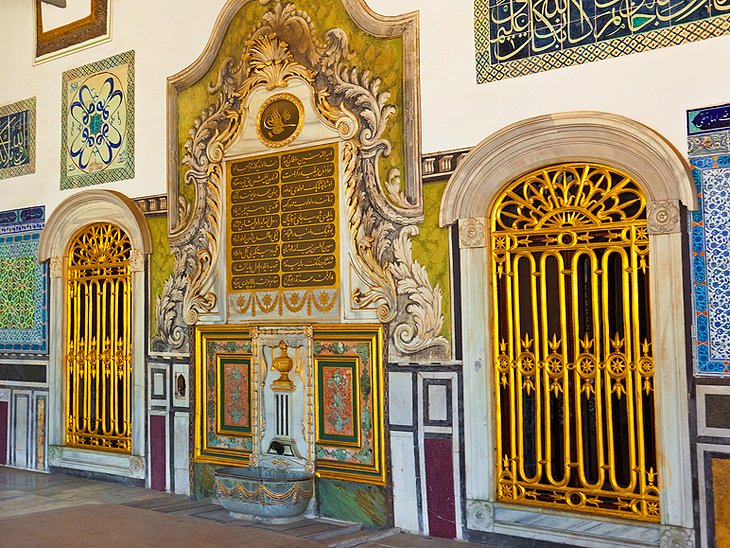
This magnificent palace was built by Mehmet, the Conqueror, in the 15th Century. It is where the Ottoman Empire’s sultans lived and ruled.
This vast complex displays Islamic art in a stunning display. It features opulent courtyards with intricate tilework and links a maze of rooms richly decorated.
The Harem complex, where the Sultan’s concubines, children, and grandchildren would live, is the most well-known. You can also walk through the enormous palace kitchens, and marvel at the stunning interior of the Imperial Council Chamber. There’s also the Third Court which contained the private rooms of the Sultan.
The Third Court houses an impressive collection in the Sacred Safekeeping Room of the Prophet Muhammad’s relics. It also contains the Imperial Treasury, which is filled with precious gems and glittering gold objects that will make your eyes water.
You will need at least half an hour to fully explore Topkapi Palace.
Address: Babihumayun Caddesi, Gulhane Park
3. Visit the Blue Mosque (Sultan Ahmet Cami)

This beautiful mosque, also known as the Blue Mosque, was Sultan Ahmet I’s architectural gift to Istanbul.
The mosque was built between 1609-1616. It had six minarets, which is the same number as the Great Mosque of Mecca. To quell the dissent, Mecca received a seventh minaret.
Its interior decoration with tens to thousands of Iznik tile tiles gives the mosque its name.
The mosque’s interior is a masterpiece of Ottoman architecture. It has a unique spatial and color effect.

Wandering among the gardens between the Hagia Sophia and Blue Mosque is a great way to enjoy Istanbul’s wonderful sightseeing.
For extra atmosphere, come at dusk as the call to pray echoes out.
The Arasta Bazaar is located directly behind the Blue Mosque. This is a great place to stop and shop because handicraft shops sell high-quality souvenirs.
Even if browsing is not your thing, you can still visit the Great Palace Mosaic Museum which is located between the Arasta Bazaar, the mosque, and the mosque.
The 250-square-meter mosaic pavement fragment that was discovered in this area in the 1950s is displayed here in a small museum. The mosaic floor’s rescue and recovery are explained in detail by excellent information panels.
4. Head underground at the Basilica Cistern, (Yerebatan Sarnici)
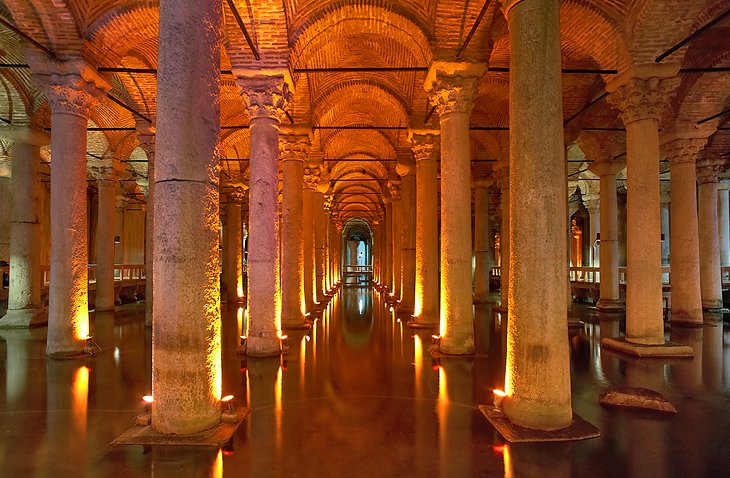
One of Istanbul’s most unusual tourist attractions is the Basilica Cistern.
This massive, palace-like underground hall was once home to the imperial water supply for Byzantine emperors. It is supported by 336 columns in 12 row.
Constantine the Great started the project, but Emperor Justinian completed it in the 6th Century.
Many columns that were used in construction were repurposed from older classical structures. They also feature decorative carvings.
These are most well-known for their Medusa head carvings and column bases, also known as Medusa stones.
It is a beautiful place to visit, with its columns perfectly lit and the steady trickle water around you.
Address: Yerebatan Caddesi, Sultanahmet
5. Stroll the Hippodrome

Septimius Severus began the ancient Hippodrome in CE203. Constantine, the Great completed it in CE330.
This was the heart of Byzantine public life. It was home to spectacular games, chariot races, and even factional conflicts.
Today, the Hippodrome is no longer visible, with the exception of a small portion of the gallery walls on its southern side. However, the At Meydani (park) is still there and is home to many monuments.
The fountain is located on the northwest side. It was presented by William II, the German Emperor of Germany, to the Ottoman Sultan in 1898.
Three ancient monuments are located to the southwest: the 20-meter-high Egyptian obelisk (from Heliopolis); Constantine’s Serpent Column, brought here from Delphi; and a stone-obelisk, originally covered in bronze-plated gold until it was stolen by soldiers of the 4th Crusade.
6. The Collection at Istanbul Archaeology Museum is Available

This important museum complex is just a short walk from Topkapi Palace and can be easily visited afterward. It houses a variety of artifacts from Turkey and the Middle East that span the breadth of the region’s history.
The museum complex has three distinct sections, all of which are worth a visit.
The Museum of the Ancient Orient features a collection that focuses on the Middle East’s preIslamic art and heritage.
The main Archaeology Museum contains statuary, tombs, and the famous sarcophaguses of Sidon, Lebanon, which were discovered by Ottoman architect Osman Hamdi Bey. The Istanbul through the Ages exhibit space helps you to visualize the city’s epic and vast history.
The third building in the museum is the Tiled Pavilion. It was built by Mehmet, the Conqueror. It houses a variety of ceramic art.
Address: Osman Hamdi Bey Yokusu Sokak, Gulhane Park
7. Shop at the Grand Bazaar (Kapali Karsi)
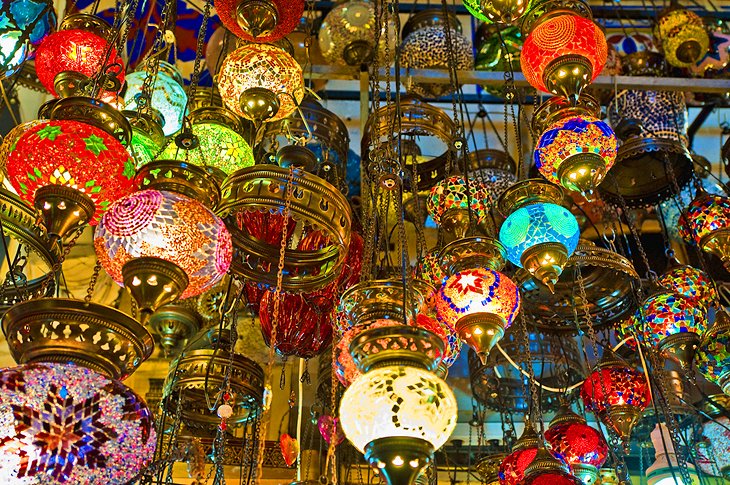
Many tourists find Istanbul shopping to be as important as visiting museums and other monumental attractions. The Grand Bazaar is the place where they all go.
This huge covered market, which is the first in the world, occupies a quarter of a city, and is surrounded by thick walls between the Nuruosmaniye Mosque, and the Beyazit Mosque.
The Beyazit Mosque, built between 1498 and 1505, is located on the same site as Theodosius’ Forum. It has an architecture that was inspired by Hagia Sophia.
The bazaar can be accessed via one of the 11 gates. From there, a maze paved laneways lined with shops and stalls selling all things Turkish, handicraft and souvenirs, leads to the area.
It is still possible to browse the various trades by separating them into specific sections.
The Burned Column is located near the entrance to the bazaar’s Divanyolu Caddesi. Constantine the Great set this stump, still 40 meters high, of a porphyry columns in his forum. It was home to a bronze statue depicting Constantine until 1105
Address: Divanyolu Caddesi
8. Admire the architecture of the Suleymaniye Mosque

The Suleymaniye Mosque, which is located high above Sultanahmet District, is one of Istanbul’s most well-known landmarks.
It was built by Sultan Suleyman I (also known as Suleyman The Magnificent; reigned from 1520-1566). Sinan, a famed Ottoman architect who is responsible for many of Turkey’s most beloved Ottoman-era monuments, including the Selimiye Mosque .
The interior of the Suleymaniye Mosque, which is dominated by its 53-meter-high dome, is noted for its harmonious proportions.
The tranquil garden contains an Ottoman-era cemetery. It is home to the turbes of Sultan Suleyman (often known as Roxelana outside of Turkey).
Address: Professor Sidik Sami Onar Caddesi
9. Get a taste of Turkish produce at the Spice Bazaar (Misir Karsisi)

The Spice Bazaar is where you can get your foodie fix: lokum (Turkish delight), nuts, herbs and spices.
It was largely funded by the Ottoman taxes on Egyptian-made goods. This is why the Turkish name (Misir Carsisi), means “Egyptian Market”.
The Spice Bazaar, Istanbul’s most famous tourist attraction, is often jammed with large tour groups from docked cruise ships.
To avoid crowds, try to arrive before 11am or later than 4pm.
The stately Yeni Cami (New Mosque) is located right next to the Spice Bazaar’s main entry. It was built in 1615 and completed in 1663 – it’s the “new” Istanbul.
The interior is richly decorated with gold leaf and tilework, so it’s worth taking a look inside as you tour the area.
Address: Yenicami, Eminonu
10. Dolmabahce Palace’s splendor is yours to enjoy

Dolmabahce Palace, a lavish and elegant palace, shows the influence of European architecture and decoration on the Ottoman Empire during the 19th century.
It was built by Sultan Abdulmecid II in 1854 and replaced Topkapi Palace, the principal residence of the sultans.
Dolmabahce Palace served as an official residence in the beginning years of the Turkish Republic. Ataturk, the founder of modern Turkey, died here in 1938.
Formal gardens are dotted with fountains, ornamental lakes, and flower beds.
The interiors combine Rococo and Baroque elements, Neoclassical, Ottoman and Ottoman with French-style furnishings and frescoed ceilings to create an enviable Turkish Renaissance style of splendor and pomp.
Location: Dolmabahce Caddesi, Besiktas
11. The Frescoes of the Chora Church are available at Kariye Cami

Chora is a Greek word that means “country”, and this beautiful Church, originally called the Church of St. Saviour of Chora, was located just outside of old Constantinople’s city wall.
It is believed that the first Chora Church was built here in 5th century. However, what you see today is its 6th reconstruction after it was completely destroyed in the 9th Century. The building has been through many facelifts over the years from the 11th through the 14th centuries.
After the Ottoman conquests of Constantinople, the church was converted into a mosque and made into a museum in 1945. It was reconstructed as a functioning mosque in 2020.
This monument is world-famous because of its vibrant 14th-century mosaics. They are preserved almost intact in two narthexes. Fragmentarily in the nave. The frescos along walls and domes make it a very special place.
These amazing examples of Byzantine art cover a broad range of topics, including the genealogy of Christ and the New Testament stories.
Kariye Cami Sokak Edirnekapi
12. Visit the Museum of Turkish and Islamic Arts, Turk ve Islam Eserleri Muzesi

This museum is located in the palace of Ibrahim Pasa who was Grand Vizier to Sultan Suleyman The Magnificent. It is a must-see attraction if you are interested in Ottoman or Islamic art.
This vast collection of carpets is regarded as one of the best in the world by textile experts.
You can take a look at the stunning array of Turkish carpet styles, along with those from Iran and the Caucasus, before you set out on your shopping spree to find the perfect floor for you.
You will also find exquisite calligraphy, ceramics, and wood carving exhibits that range in date from the 9th Century CE to the 19th Century.
Address: At Meydani Caddesi, Sultanahmet
13. View the Little Aya Sofya (Kucuk Aya Sofya)

Before Emperor Justinian built Hagia Sofia (Aya Sofya), , he had to check if it would work structurally so he made a miniature version.
The original name of the church was the Church of Sergius and Bacchus. However, the obvious architectural similarities with the Aya Sofya made it the building’s long-held nickname.
The church was converted to a mosque during the Ottoman era. It still functions today as a functioning mosque.
Although the proportions of the building are not as impressive as those in Istanbul, it has been beautifully restored and well worth a visit.
This is a peaceful escape from the bustling city of Sultanahmet. It’s a pleasant walk down narrow alleyways lined by tall Ottoman-era buildings. Some are beautifully restored, while others are creaking into dilapidation.
To sustain your sightseeing adventures, enjoy a cup of tea in Little Aya Sofia’s tranquil garden.
Address: Kucuk Aya Sofya Caddesi , Sultanahmet
14. Admire the tilework at the Rustem Pasa Mosque

The Rustem Pasa mosque is perhaps the most beautiful mosque in Istanbul. It houses the best preserved Iznik tile panels.
The Blue Mosque (Sultanahmet Mosque), may be the most prominent, but it is here – covering both exterior courtyard walls as well as the mosque’s interior – that you will find the finest examples of these intricately hand-painted tiles in blues and reds.
It’s even better because it’s less well-known, so you can likely to see them up close without having the crowds.
The fun of finding the mosque is enhanced by its location, which is down a narrow lane that’s lined with market stalls. It’s also close to the Spice Bazaar.
Address: Hasircilar Caddesi, Eminonu
15. Take a stroll through the Ramparts Of Yedikule Fortress (Yedikule Hisari).

It’s not easy to reach Yedikule (Castle of the Seven Towers) by suburban train, but this fortress is worth the effort.
The fortress was built by Emperor Theodosius I in the 5th Century. It formed the southern section of Constantinople’s defensive walls.
Porta Aurea, a name given to the mammoth arch that was blocked in the Late Byzantine period, was used for its doors that were plated with gold.
The fortress was used by the Ottomans to defend the city and later, as a prison or execution site.
Yedikule was recently restored and offers spectacular views of the Sea of Marmara.
Address: Yedikule Sokok, Yedikule
16. Galata Tower: Climb up
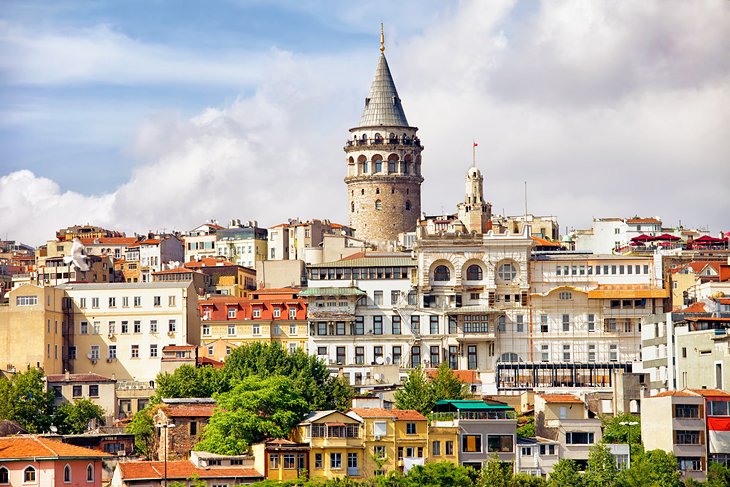
The Genoese built this tower that overlooks the Golden Horn in the 14th Century. It is one of Istanbul’s most iconic landmarks.
The tower, which stands 52 meters high, was Istanbul’s tallest structure for centuries. Due to storm damage and fire, the tower has been rebuilt several times.
The observation deck on the top floor, with its restaurant, is a great place to see the stunning views of Istanbul’s central old city.
It’s a very popular sight so arrive early or be ready to wait.
Address: Bereketzade, Beyoglu
17. Explore the Bosphorus Strait

Many visitors consider a trip to Istanbul incomplete without taking a Bosphorus ferry to explore the city’s famous waterway. It connects the Black Sea and the Sea of Marmara.
Istanbul’s most famous views can be seen from the water. The Bosphorus excursion ferry ferries allow you to relax, take in the sights, and enjoy the stunning scenery.
The Long Bosphorus Tour is the most well-known ferry tour. It departs from Eminonu ferry terminal daily and continues up the strait towards Anadolu Kavagi village, just north of the mouth of the Strait into the Black Sea.
There are many shoreside views of Ottoman-era palaces, mansions, and defensive fortresses along the ferry cruise.
The Long Bosphorus Tour is two hours long, with stops in Anadolu Kagi for three hours and then returning. If you are interested, you will need to reserve a whole day.
A Short Bosphorus Tour is also available, which operates daily afternoon sailings for two hours from spring through fall. This ferry cruise returns up the Bosphorus to Rumeli fortress, before turning back.
18. Istanbul Modern: Take in the Art

This art gallery is proof that Istanbul is more than historical sightseeing. It has a large collection of modern Turkish art and an ever-changing schedule of exhibitions.
This is the best spot in town to keep your pulse on Turkey’s contemporary art scene.
The Istanbul Modern also has galleries and a cinema which hosts film screenings. It also has a library.
While they await the completion of the permanent Karakoy home for this art museum, the galleries will temporarily be housed in a Beyoglu historic building.
Address: Mesrutiyet Cadesi, No.99, Beyoglu
19. Visit the Historic Fatih Mosque
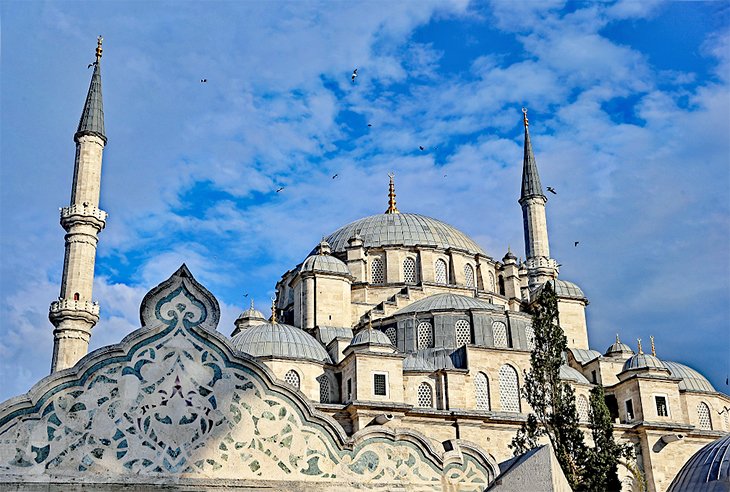
There are many beautiful places in Istanbul and this mosque is one of them. This important mosque is located in Fatih, the district that was founded by Sultan Mehmet, the Conqueror. He broke through Constantinople’s walls and ended the Byzantine era.
After the original mosque of 15th-century was severely damaged in an earthquake, this magnificent and impressive building was rebuilt in 18th century. It boasts multiple domes and minarets.
It is a historic building that was the location of Istanbul’s first grand imperial mosques. Also, Sultan Mehmet’s grave is located here.
Location: Fevzi Pasa Caddesi, Fatih
20. See the Ottoman-Era Art at Pera Museum

Istanbul’s most renowned art gallery is the Pera Museum. Here art-hounds can view some of the best collections of Ottoman-era artwork in the world.
The museum houses the famous paintings of Osman Hamdi Bey, an Ottoman artist. The collection also includes many other artists whose work focuses on the Ottoman World, both local and international.
The Pera also has Ottoman art. It houses a famous collection of Ottoman-era ceramic and tile work, and a large collection of Ottoman artifacts as well as pieces from earlier periods.
A program of constantly changing exhibitions is also offered. These focus on contemporary and historic art, and often feature the biggest names in international art.
Address: Mesrutiyet Cadesi, Tepebasi
21. Stroll Istiklal Caddesi & Taksim

Pedestrianized Istiklal Caddesi is a busy shopping street that boasts a variety of cafes and restaurants.
You can reach the lower end of the street by taking the oldest underground railroad in the world (the Tunel), which was built in 1875 near Galata Bridge. A tramway runs along the length of the street to Taksim Square, at the top.
The busy Cumhuriyet Caddesi, which is located at Taksim Square has many high-rises, shops, restaurants and hotels. Just after the square is on the east side is Macka Park which houses the fascinating Military Museum.
Many churches and old consulate buildings have ornate facades in the area surrounding Istiklal Caddesi.
Orhan Pamuk’s Museum of Innocence is also located nearby. Pamuk, Turkey’s most renowned author and winner of the Nobel Prize for Literature, is Turkey’s most well-known. This museum of conceptual art is inspired by his novel The Museum of Innocence. It is an unusual, quirky, and wonderfully atmospheric experience.
Address: Istiklal Caddesi
22. Explore the District Of Uskudar
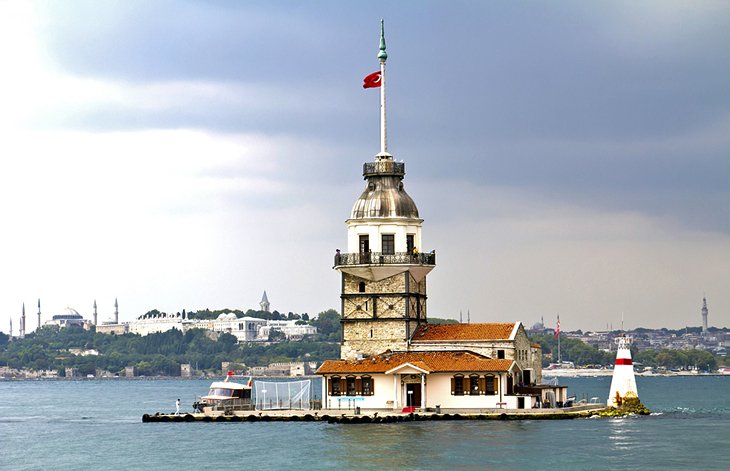
Istanbul’s Asian shore can be reached easily by ferry from Eminonu Dock across the Bosphorus.
The Kizkulesi (30 m high) is located on an island just off the Asiatic coast.
Uskudar, formerly known as Scutari, has many beautiful mosques, winding lanes and weathered brown timber homes (especially between the ferry docks and the large cemetery).
This was the first Greek settlement on the Bosporus, and is also known as Chrysopolis in antiquity.
It was more vulnerable to foreign conquerors than Constantinople due to its defensive position and strong walls. However, it was able draw economic benefit from its exposed location – it was, until 1800, the terminus for the caravan routes that transported the treasures and other goods of the East to Constantinople.
The Atik Valide Mosque was built by Sinan, the famous Ottoman architect. Also, the Cinili Mosque has beautiful Iznik tilework.







